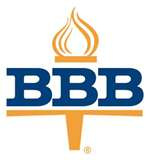The Southeast Texas 2011 summer drought has brought about the doom of so many of our beautiful trees, both of our loblolly pines and our many varieties of oak trees. We have been so busy lately helping our customers safely remove dead trees in their neighborhoods and properties. And our customers, typically being conservation-conscious, ask about putting the dead wood to good use as firewood. Many ask, what is the best wood to use for firewood? That question can be answered in two phases: what type of wood makes for good firewood, and what process must be done to ensure that good firewood burns well.
Generally speaking, hard woods are the best type of wood for firewood. Hard wood is a denser wood, and this means that hard wood produces more heat as it burns (called firewood btu) than does a softer wood. Softer woods burn, too, but they tend to burn faster and simply not keep you as warm in the process.
Given that our two varieties of trees here in Southeast Texas are the loblolly pine trees and the oaks, the oak firewood would be the preferred wood for the fireplace. Oak firewood burns at anywhere between 22 and 24 firewood btu thermal units per cord depending on the variety of oak, making all varieties of oak among of the best hardwoods for keeping warm. They burn clean, leave negligible residue, and maybe most importantly, have great aroma. An oak firewood fire emits a wonderful smell, and adds a welcome dimension to the comfortable ambience of firelight glow. Compare that with pine varieties of firewood, which on average have a firewood btu between 14 and 18 thermal units per cord, and tend to pop and fume as they burn.
Making sure that good firewood burns well is making sure it is well seasoned. Well seasoned is just a fancy way of saying that the firewood needs to be completely dry. It generally takes splitwood between one and two years to become completely dried of internal moisture after being cut. Until firewood is dry, trying to burn it will result in wood that sizzles and pops due to the moisture that is literally boiling as it burns. It will also emit the creosote (a smoke residue) that will gunk up a chimney and become a fire hazard.
So if you have the ability to split firewood and stack it for proper drying, aim for oak firewood. Otherwise, make sure that you get your wood from a firewood provider who sells hardwood varieties, like oak firewood, that he does a good job of seasoning his wood for sale. Then go home and snuggle up in front of a warm and cozy fire, and enjoy some warmth this winter!














